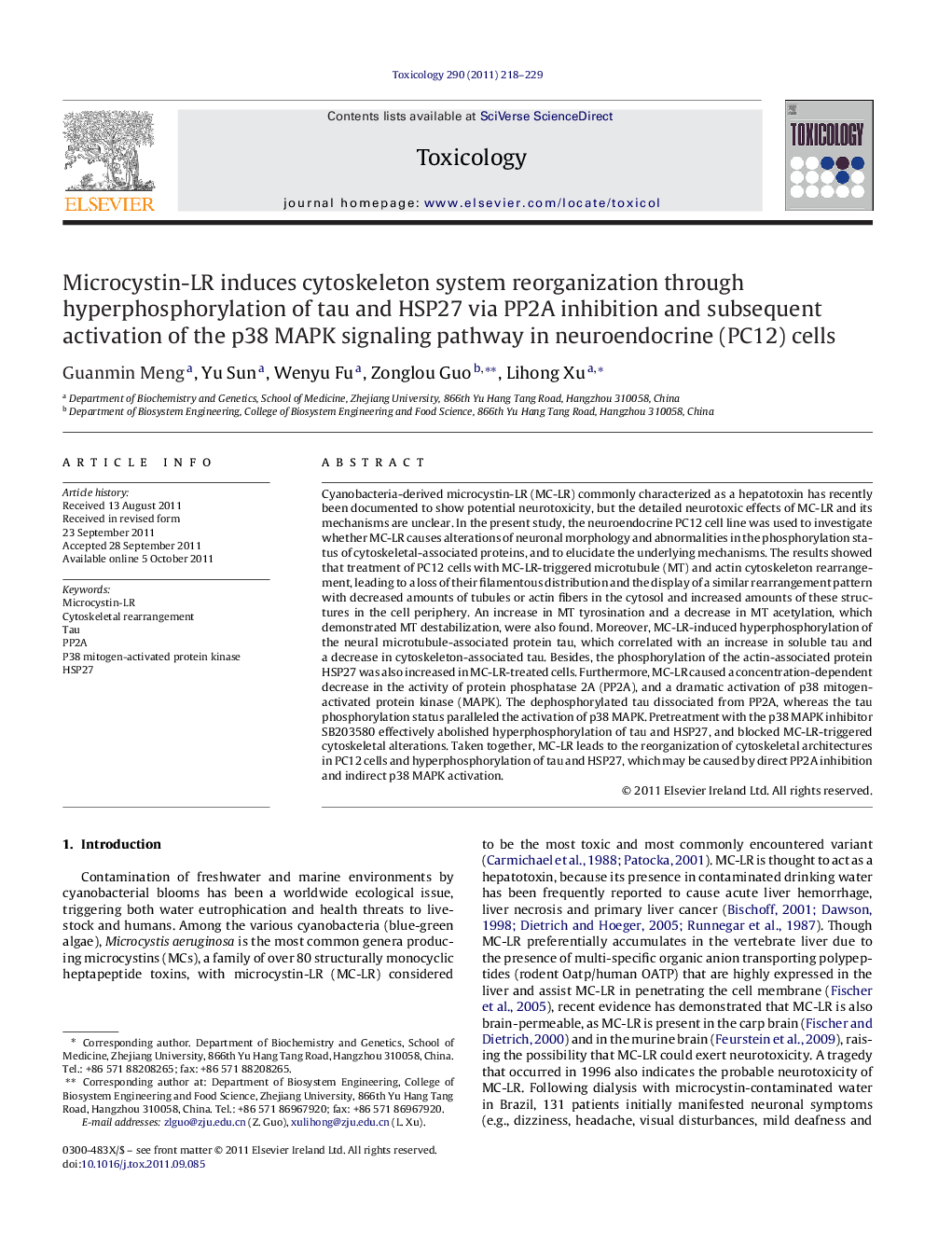| Article ID | Journal | Published Year | Pages | File Type |
|---|---|---|---|---|
| 2595849 | Toxicology | 2011 | 12 Pages |
Cyanobacteria-derived microcystin-LR (MC-LR) commonly characterized as a hepatotoxin has recently been documented to show potential neurotoxicity, but the detailed neurotoxic effects of MC-LR and its mechanisms are unclear. In the present study, the neuroendocrine PC12 cell line was used to investigate whether MC-LR causes alterations of neuronal morphology and abnormalities in the phosphorylation status of cytoskeletal-associated proteins, and to elucidate the underlying mechanisms. The results showed that treatment of PC12 cells with MC-LR-triggered microtubule (MT) and actin cytoskeleton rearrangement, leading to a loss of their filamentous distribution and the display of a similar rearrangement pattern with decreased amounts of tubules or actin fibers in the cytosol and increased amounts of these structures in the cell periphery. An increase in MT tyrosination and a decrease in MT acetylation, which demonstrated MT destabilization, were also found. Moreover, MC-LR-induced hyperphosphorylation of the neural microtubule-associated protein tau, which correlated with an increase in soluble tau and a decrease in cytoskeleton-associated tau. Besides, the phosphorylation of the actin-associated protein HSP27 was also increased in MC-LR-treated cells. Furthermore, MC-LR caused a concentration-dependent decrease in the activity of protein phosphatase 2A (PP2A), and a dramatic activation of p38 mitogen-activated protein kinase (MAPK). The dephosphorylated tau dissociated from PP2A, whereas the tau phosphorylation status paralleled the activation of p38 MAPK. Pretreatment with the p38 MAPK inhibitor SB203580 effectively abolished hyperphosphorylation of tau and HSP27, and blocked MC-LR-triggered cytoskeletal alterations. Taken together, MC-LR leads to the reorganization of cytoskeletal architectures in PC12 cells and hyperphosphorylation of tau and HSP27, which may be caused by direct PP2A inhibition and indirect p38 MAPK activation.
► MC-LR-triggered microtubule and actin cytoskeleton rearrangement in neuroendocrine PC12 cells. ► MC-LR caused direct PP2A activity inhibition and indirect p38 MAPK activation. ► MC-LR-induced hyperphosphorylation of cytoskeletal tau and HSP27 and cytoskeletal alterations through p38 MAPK.
